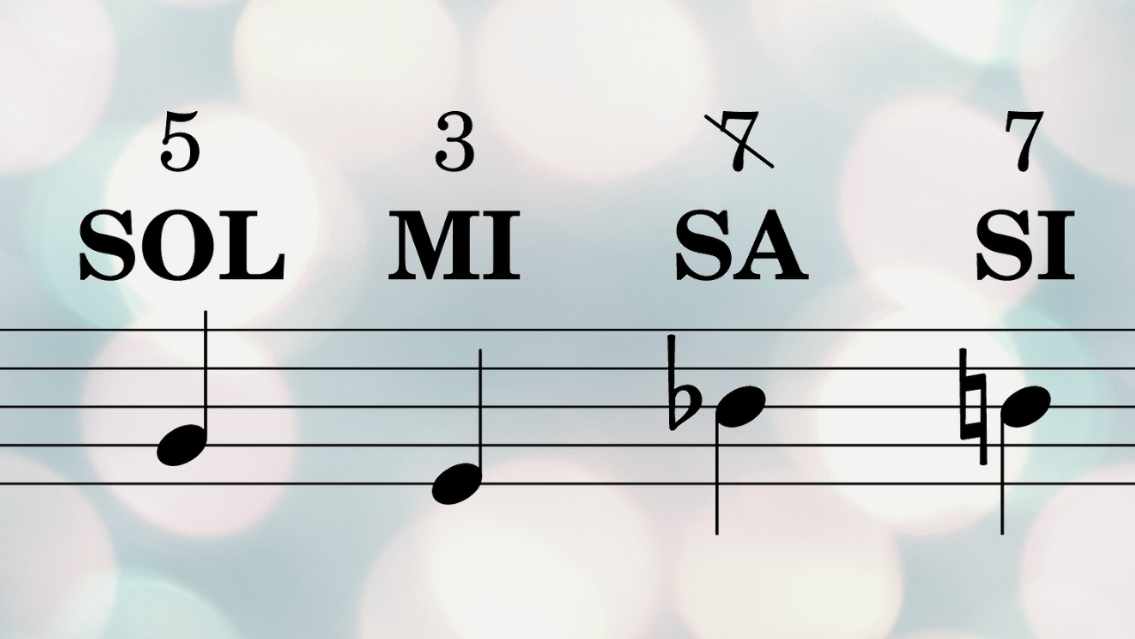Let’s write Solmisasi (“notasi angka”) using Lilypond
“solmisasi‐lily” is a library developed as a workaround on engraving solmisasi numbered music notation that is widely used in Indonesia, using Lilypond. This library would always be considered in beta phase, since some extra works might have to be done by users in engraving such a specific score or sheet music in this notation system.
Preamble Further Reading View it on GitHub

Preamble
Solmisasi (notasi angka) (EN: solmization) is a numbered music notation which is widely used in Indonesia, especially for vocal scores/sheet music, to represent solfège in numbers (0..7). It is quite similar to Chinese Jianpu system. In Indonesia, particularly, solmisasi notation takes the form of 1 to 7 (one to seven) for do, re, mi, fa, sol, la, si; and 0 (zero) for a single rest, with some rules/conventions described below.
(Notes: These rules/conventions are based on the author’s knowledge about this music notation. It could possibly differ to what rules other Indonesian people know/use. Some constraints that this library applied, will also be explained.)
Solmisasi Rules/Conventions
Pitches
- Solmisasi is mostly used to write vocal compositions and arrangements. So, possible pitch range is from
E2(the lowest male pitch, could possibly be lower) up toC6(the highest female pitch, could possibly be higher). However, there is no such validation of pitches included in this library. - Solmisasi is mainly applied in vocal/choral music. Pitch numbers are written in a ‘relative’ way, based on the gender of vocal instruments. The solmisasi pitch numbers written on male vocal staves (tenor, baritone, and bass) are actually 1-octave lower than the same ones written on female vocal staves (soprano, mezzo-soprano, and alto).
Accidentals
- Sharp notes (♯) are notated by overlaying a single “/” (upward slash) to the pitch number.
- Flat notes (♭) are notated by overlaying a single “\” (downward backslash) to the pitch number.
- This music notation is by far not able to handle double-flats and double-sharps. Those kind of pitches should be notated in their ‘normalized-enharmonic’ pitch, for example:
4forgeses(g♭♭) in C major (g♭♭ is normalized as f), and
5forcisis(c♯♯) in G major. - Solmisasi doesn’t know about any microtonal system.
Octavations
- 1-octave HIGHER/LOWER pitches are individually written as an object containing the corresponding pitch number (and an overlaying accidental slash/backslash, if any) with a single dot ABOVE/BELOW, respectively.
- 2-octaves HIGHER/LOWER pitches are individually written as an object containing the corresponding pitch number (and an overlaying accidental slash/backslash, if any) with a double dot ABOVE/BELOW, respectively. Consequently, this double dot should be stacked vertically. However, to maintain vertical spaces, this library draws a horizontal double dot.
Note Durations
- Every single note object is considered as a quarter note/crotchet, if there are no horizontal lines (beams) above.
- Similarly, every single duration dot (
.) is considered as a quarter/crothet rest, if there are no horizontal lines (beams) above. - Duration dots (
.) maintain their own “rhythmic space”, unlike the standard notation in which they are “glued” left to their parent/associated notes or rests.
Scales and Key Signatures
- Solmisasi occupies MOVABLE/FLEXIBLE ‘DO’. Note pitches are written as if they are in major scales. In a C major passage, the pitch
dequals to2(re), or vice versa. This also applies to passages written in A minor.
In a G major passage, the pitchfisequals to7(si), or vice versa. This also applies to passages written in E minor. - Major scales are written using the pitch
1(do) as the root, for example:1=F♯or1=f♯for F♯ major, and1=E♭or1=e♭for E♭ major. Minor scales are written using the pitch6(la) as the root, for example:6=For6=ffor F minor, and6=Gor6=gfor G minor. - Key accidental suffixes (sharp and flat) can also be substituted with their equivalent text suffixes, e.g.
isfor sharp, andesfor flat. For example:1=Fisequals to1=F♯, and1=Esequals to1=E♭.
(Note: To Indonesian people,Esoresis more commonly used thanEesorees, even though, in my opinion, this is inconsistent.) - There are many cases in which minor keys are written in their equivalent major keys, such as
1=B♭or1=Besfor6=G, and1=A♭or1=Asfor6=F.
(Note: Similar to the case ofes,Asorasis more commonly used thanAesoraes.)